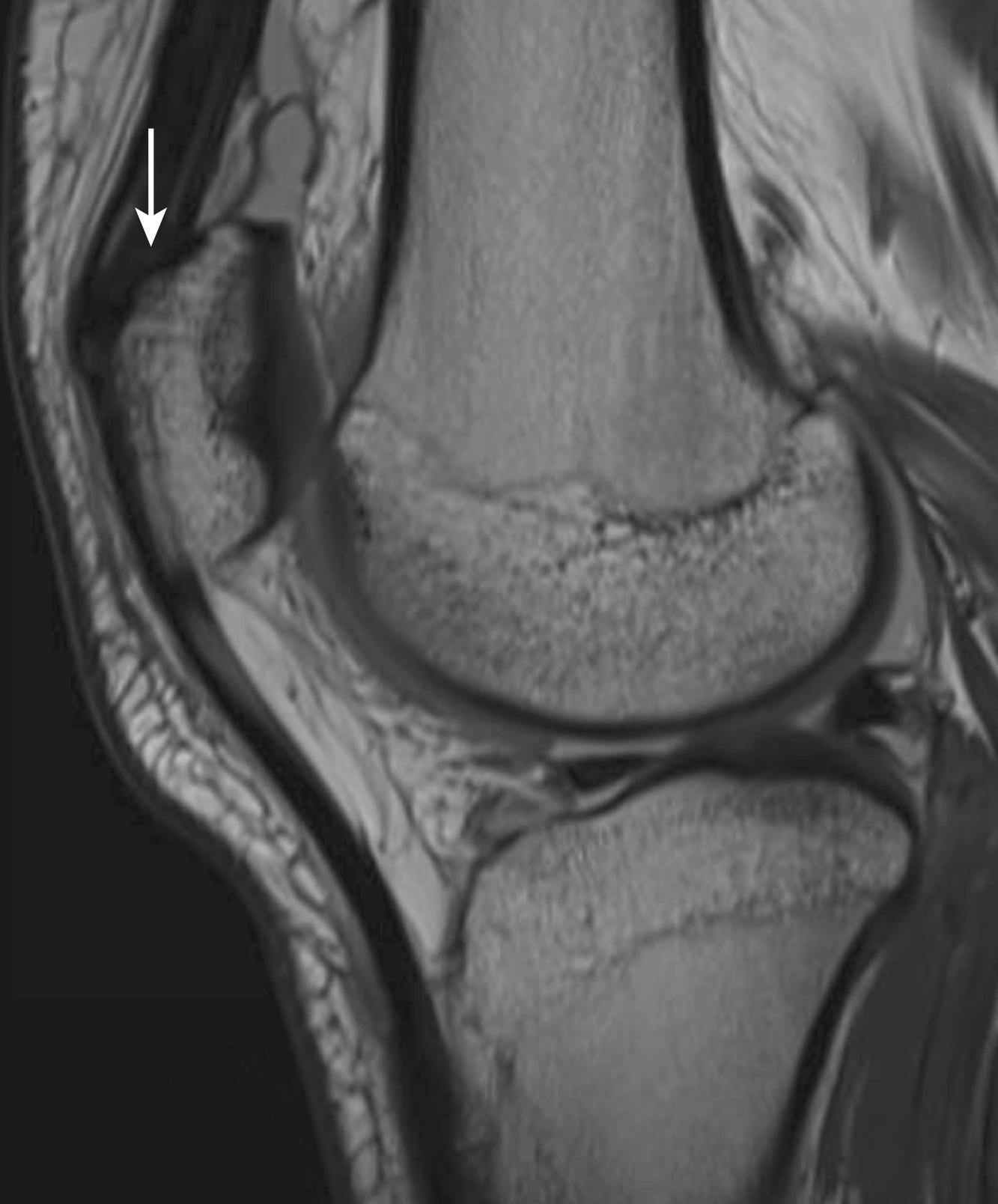Physical Address
304 North Cardinal St.
Dorchester Center, MA 02124
Quadriceps tendon tears are a common cause of disruption of the extensor mechanism about the knee. Quadriceps tendon tears occur more often than patellar tendon tears but less often than patella fractures. Quadriceps tendon injuries occur most commonly in men and in patients between 40 to 70 years old. Tears can occur anywhere along the course of the tendon but typically occur at the bone–tendon junction in older patients and at the midtendinous or musculotendinous junction in younger patients. , These injuries can occur from direct trauma or, more commonly, as a result of eccentric contraction of the quadriceps musculature from a fall or sporting injury. In rare cases quadriceps tendon injuries may occur after total knee arthroplasty or have other iatrogenic causes. Patients with diabetes, chronic steroid use and renal disease are at an increased risk of a quadriceps tendon tear. Unilateral tendon ruptures are more common than bilateral ruptures. When bilateral ruptures occur, they typically are related to an underlying connective tissue disease, fluoroquinolone use or a medical condition.
The quadriceps tendon is the terminal coalescence of the four quadriceps muscles: the rectus femoris, vastus medialis, vastus lateralis and vastus intermedius. The articularis genu muscle may contribute tendinous fibres in some patients. In adult patients the quadriceps tendon measures approximately 8 mm thick, 35 mm wide and 85 mm long with the knee flexed. Proximally the tendon is multilaminar and is composed of several tendinous slips with various morphologies described. Distally the tendon slips conjoin to form one common tendon, which generally measures 5 cm long. This common tendon inserts onto the superior aspect of the patella 7 to 10 mm from the articular margin. It is critical to note the anatomical attachment point on the patella when considering surgical repair of the quadriceps tendon to restore normal knee biomechanics ( Fig. 34.1 ). The vastus medialis and vastus lateralis aponeuroses provide significant contributions to the medial and lateral retinacula, respectively.

In general the proximal tendon is made up of a variable blending of three layers: superficial, middle and deep. The superficial layer originates from the posterior fascia of the rectus femoris and becomes confluent with the anterior patella periosteum and the patellar tendon. The middle layer arises from the deep fascia that separates vastus medialis and lateralis from the vastus intermedius. The deep layer is formed by the anterior fascia of the vastus intermedius. The deep side of the tendon is lined with synovium and can usually be visualised during routine knee arthroscopy.
A number of arteries contribute to the blood supply of the quadriceps tendon, including branches of the lateral femoral circumflex artery, the descending genicular artery and the medial and lateral superior genicular arteries. These arterial branches form vascular arcades that provide the blood supply to the quadriceps tendon. The medial and lateral arcades supply their respective portions of the tendon and anastomose below the rectus femoris tendon. A peripatellar vascular ring arises from the terminal branches of the superior genicular arteries and provides blood supply to the distal 1 cm of the quadriceps tendon as it inserts on the patella. The blood supply is most robust along the superficial quad tendon and less vascular along the deep portion of the tendon, with a hypovascular zone, not readily supplied by these various arcades, located between 1 to 2 cm from the superior pole of the patella, predisposing this area to injury and rupture.
Collectively the quadriceps musculature, quadriceps tendon, patella and patellar tendon function to extend the knee. As the quadriceps musculature contracts, the force is transmitted through the quadriceps tendon, to the patella tendon and retinacula, extending the knee. The anterior position of the patella confers a mechanical advantage and acts as a fulcrum, increasing the force of active knee extension.
Repetitive microtrauma that leads to degeneration of the tendon is often present before traumatic rupture. Rupture results from failure of the tendon, usually at an area of pathological degeneration, and is often a result of sudden eccentric contraction of the extensor mechanism against resistance with the knee flexed and the foot planted. Complete ruptures that are left untreated can lead to chronic extensor lag, quadriceps weakness and associated patella baja with alteration of normal knee biomechanics.
Typically patients who sustain an acute quadriceps tendon rupture describe an immediate onset of pain and swelling during loading of the bent knee or kicking with rapid deceleration. Occasionally there will be the feeling or hearing of a ‘pop’ associated with a feeling of the knee giving way, followed by an inability to bear weight. Some patients with a prior quadriceps tendon pathological condition may endorse preexisting pain.
On examination, many patients demonstrate an inability to extend the knee or perform a straight leg raise because of loss of continuity of the extensor mechanism. In some cases this ability is preserved because of the presence of partial tears or intact retinacula. There may be a palpable soft tissue defect proximal to the superior pole of the patella or visible or palpable patella baja.
The use of plain radiography may demonstrate avulsion fractures of the superior patella or patella baja suggesting a loss of continuity of the extensor mechanism. Radiographs of the contralateral knee may help distinguish subtle patellar height changes if signs are not obvious on initial examination. Ultrasound can be a useful tool to evaluate disruption of the tendon and other soft tissues or presence of a hematoma. Although uncommonly used, arthrography can be used to examine for quadriceps tendon rupture, with extravasation of radiopaque material outside the knee indicating a disruption of the extensor mechanism. Magnetic resonance imaging (MRI) is the gold standard for identifying partial and complete quadriceps tendon ruptures. Findings on MRI may include tendon discontinuity, increased signal within the tendon, adjacent hematoma and a wavy detensioned appearance of the patellar tendon. ,
Become a Clinical Tree membership for Full access and enjoy Unlimited articles
If you are a member. Log in here